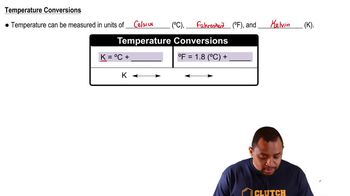Here are the essential concepts you must grasp in order to answer the question correctly.
Ideal Gas Law
The Ideal Gas Law is a fundamental equation in chemistry that relates the pressure, volume, temperature, and number of moles of a gas. It is expressed as PV = nRT, where P is pressure, V is volume, n is the number of moles, R is the ideal gas constant, and T is the temperature in Kelvin. This law allows us to calculate one variable if the others are known, making it essential for solving gas-related problems.
Recommended video:
Molar Mass
Molar mass is the mass of one mole of a substance, typically expressed in grams per mole (g/mol). For nitrogen gas (N2), the molar mass is approximately 28.02 g/mol, as it consists of two nitrogen atoms. Understanding molar mass is crucial for converting between grams and moles, which is necessary for applying the Ideal Gas Law in this question.
Recommended video:
Temperature in Kelvin
Temperature in Kelvin is the absolute temperature scale used in scientific calculations, where 0 K represents absolute zero, the point at which molecular motion ceases. To convert Celsius to Kelvin, one adds 273.15. In gas law calculations, using Kelvin is essential because it ensures that temperature values are always positive, which is necessary for the mathematical relationships in the Ideal Gas Law.
Recommended video:
Temperature Conversion Formulas
 Verified step by step guidance
Verified step by step guidance


